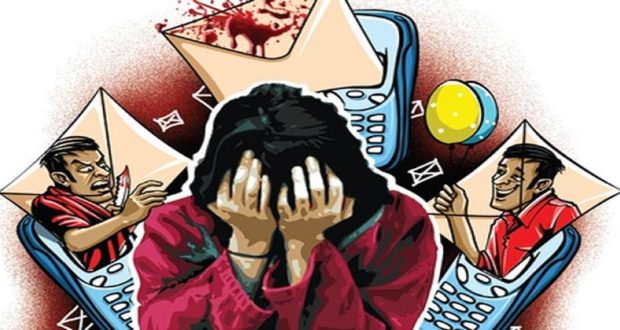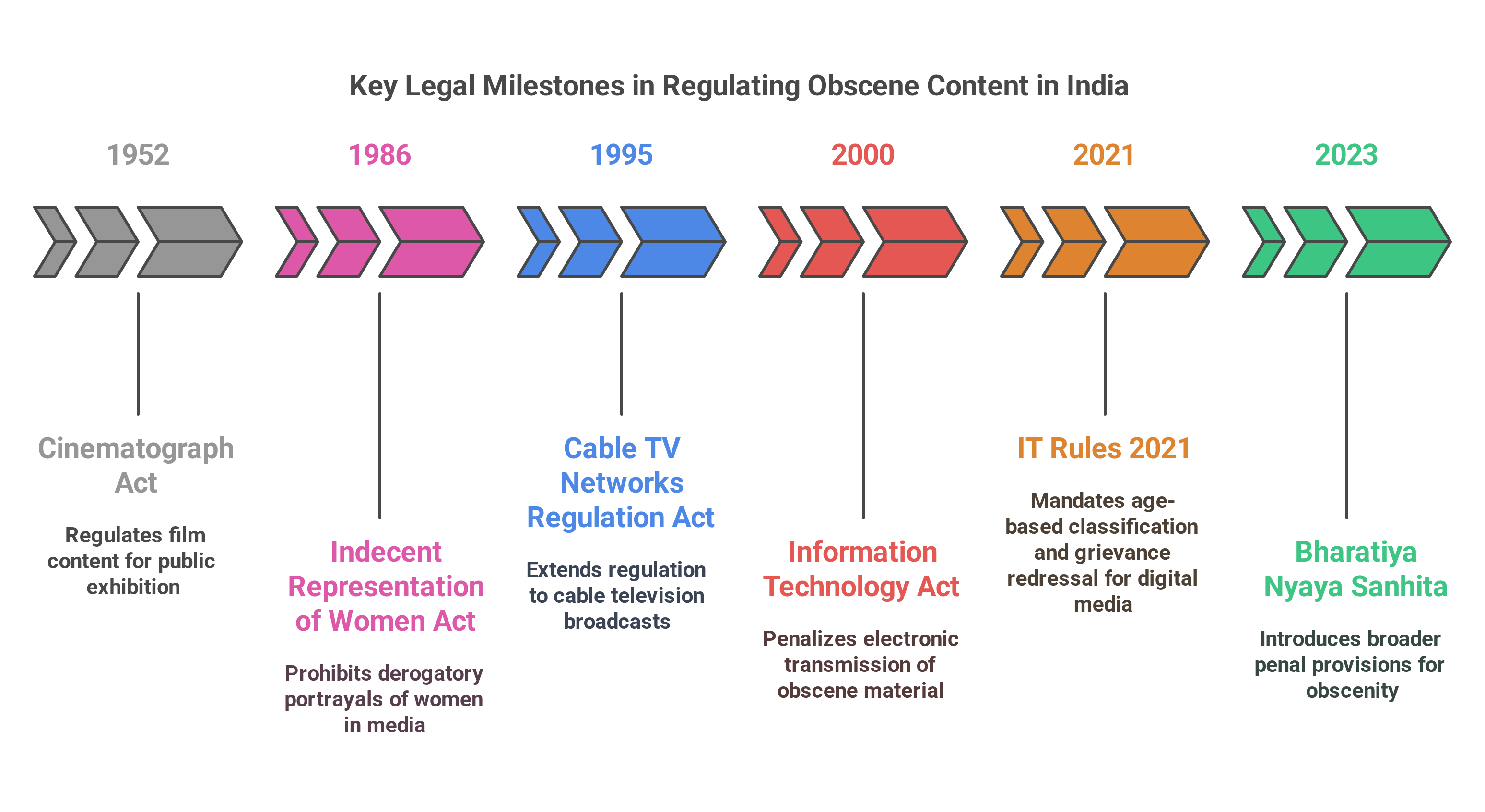Introduction:
The Supreme Court of India recently acknowledged concerns about the presence of obscene content on OTT platforms and social media. The court directed the Centre to take action, within legal limits, to address this growing issue. A bench comprising Justices B R Gavai and A G Masih heard a Public Interest Litigation (PIL). The petition highlighted the uncontrolled spread of obscene, sexually explicit, and even harmful content online. Solicitor General Tushar Mehta, representing the government, acknowledged the severity of the issue and noted that more regulations were in contemplation to curb obscenity on these platforms.
The PIL raised urgent concerns, focusing on the unrestricted access to sexually perverted and pornographic content on platforms like Netflix, Amazon Prime, Ullu Digital, and social media sites such as X Corp (formerly Twitter), Meta (Facebook), and Google. The petitioners argued that this content negatively affects societal values, public safety, and the mental health of individuals, especially children and youth.
Key Concerns Raised in the Petition
1. Obscene Content on Digital Platforms: The petitioners argued that obscene and perverted content is circulating freely across OTT platforms and social media. The types of content discussed included child pornography, paedophilic, incestuous, and bestiality content, as well as soft-core adult content.
2. Impact on Society: The petition highlighted how the unchecked circulation of such material can lead to rising incidents of crimes against women and children. It claimed that the exposure to such explicit material alters young minds’ understanding of sexuality, leading to unhealthy perceptions and behaviors.
3. Failure of Authorities: Despite complaints and representations made to the authorities, no effective action had been taken. The petitioners expressed concern that the government had not introduced any meaningful regulations to control this problem, despite knowing the serious consequences.
Need for Regulating Obscenity on Digital Platforms
1. Preserving Social and Cultural Values: Unchecked obscene content can weaken societal moral standards, fostering disrespect and moral decay.
o Example: The 2021 "Bulli Bai" app incident, where images of women were auctioned online, demonstrated the misuse of social media to harm women.
2. Protecting Human Dignity: Content that reduces individuals to objects for lust violates the core principle of human dignity, which is central to personal autonomy.
3. Avoiding the Normalization of Obscenity: Regular exposure to obscene content can desensitize individuals, eroding empathy and reinforcing harmful stereotypes.
4. Ethical Responsibility of Platforms: Digital platforms should ensure content promotes the greatest good and fosters a safe environment for users.
5. Upholding Constitutional Morality: The Constitution's moral framework ensures that digital content respects core values like justice and equality. Article 19(2) allows reasonable restrictions on freedom of expression, including public order and decency.
Ethical Issues in Regulating Obscene Digital Content
The regulation of obscene content on digital platforms brings forth several ethical dilemmas:
- Vagueness and Subjectivity: Deciding what constitutes obscene content is subjective and varies across cultures, regions, and time periods. Language and content once considered inappropriate may now be acceptable in everyday discourse.
- Paternalism vs. Autonomy: Excessive regulation may infantilize users, assuming they cannot make informed decisions about what content they wish to consume. While protecting users from harmful content is essential, respecting their autonomy is equally important.
- Evolving Social Norms: Obscenity is a culturally relative concept that changes over time. For instance, ancient Indian art such as the sculptures at Khajuraho and Konark temples feature erotic imagery, which, if created today, would likely face censorship.
- Power Dynamics: The question arises of who determines what is acceptable content. There is a concern that censorship could be used against marginalized communities, curbing their expression and silencing their voices.
- Censorship vs. Reasonable Restrictions: While some argue that censorship infringes on freedom of expression, there is a need for reasonable restrictions to protect public morals. Overregulation can stifle creativity and limit the diversity of media.
Legal Framework Governing Obscene Content
India's legal landscape includes multiple laws and rules regulating digital content, though ambiguity persists regarding the definition of 'obscenity':
- Information Technology Act, 2000 (Section 67): Penalizes publishing or transmitting obscene material in electronic form.
- Bharatiya Nyaya Sanhita (BNS), 2023: Introduces broader penal provisions, but lacks specific definitions of obscenity.
- Information Technology (Intermediary Guidelines and Digital Media Ethics Code) Rules, 2021:
- Mandate age-based content classification.
- Establish a three-tier grievance redressal mechanism:
- Level I: Publisher’s internal grievance officer.
- Level II: Self-regulatory bodies (SRBs).
- Level III: Oversight by the Ministry of Information & Broadcasting (MIB) and the Grievance Appellate Committee (GAC).
- Cinematograph Act, 1952 and Cable TV Networks Regulation Act, 1995: Apply to traditional broadcast media.
- Indecent Representation of Women (Prohibition) Act, 1986: Prohibits portrayals that are derogatory to women.
Judicial Interpretation and Challenges
Judicial interpretations of obscenity have evolved over time. In Ranjit D. Udeshi v. State of Maharashtra (1964), the Supreme Court applied the Hicklin test, judging material by its tendency to deprave and corrupt.
However, in the 2014 Aveek Sarkar v. State of West Bengal case, the Court adopted the community standards test, which evaluates obscenity based on social and moral norms. This shift highlights the challenge of applying consistent standards across India's diverse population.
Moreover, the increasing trend of multiple FIRs for the same offense has raised concerns about harassment and the infringement of the accused’s right to a fair defense.
Conclusion
The regulation of obscenity on digital platforms is a complex issue due to its subjective nature, evolving social norms, and the need for a balance between creativity and societal responsibility. Creating a responsible digital media environment requires clear legal guidelines, self-regulation, public awareness, and global cooperation. Upholding values like justice, dignity, transparency, and accountability will help platforms strike the right balance between creative freedom and social responsibility.
| Main question: "Digital content regulation in India is at the intersection of freedom of expression and societal morality." Examine this statement in the context of obscenity on OTT platforms and social media |








